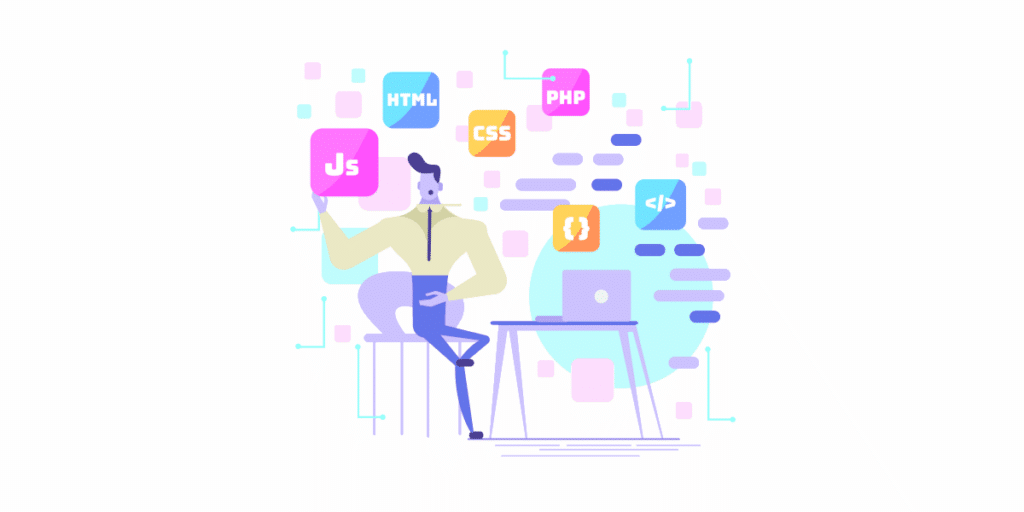The theory of programming languages is an essential branch of computer science that focuses on the design, analysis, characterization, and classification of languages used to communicate instructions to a computer.
This theory encompasses a variety of concepts, including formal languages, automata, and grammars. This document explores the fundamental principles of this discipline by relying on concrete examples of languages and grammars.
Formal Languages
Formal languages are sets of words constructed from a given alphabet and according to specific rules. They are used to model the syntax of programming languages and are fundamental to understanding how programs are interpreted and executed.
A formal language can be defined by a formal grammar, which is a set of production rules. For example, consider the following grammar for a simple language:
- S -> aA
- A -> b
In this grammar, ‘S’ and ‘A’ are variables, while ‘a’ and ‘b’ are terminal symbols. The string ‘ab’ belongs to the language defined by this grammar. Formal languages can be classified into different categories based on the power of their grammars:
- Regular languages, defined by regular expressions and finite automata.
- Context-free languages, defined by context-free grammars and pushdown automata.
- Context-sensitive languages, defined by context-sensitive grammars.
- Recursively enumerable languages, defined by Turing machines.

Automata
Automata are mathematical models for abstract machines capable of recognizing formal languages. They play a crucial role in the theory of programming languages by providing tools for syntactic analysis and pattern recognition.
Deterministic finite automata (DFA) and non-deterministic finite automata (NFA) are used to recognize regular languages. For example, a DFA to recognize the language formed by strings containing an even number of ‘a’s can be represented by the following states:
- q0 (initial state, accepting): no ‘a’ or an even number of ‘a’s
- q1: an odd number of ‘a’s
Transitions are defined by:
- q0 -> q1: read ‘a’
- q1 -> q0: read ‘a’
Pushdown automata (PDA) are used to recognize context-free languages. They possess memory in the form of a stack, allowing them to handle nested structures like parentheses in arithmetic expressions.
Finally, Turing machines, with their infinite tape and rewriting capability, are more powerful computational models capable of recognizing recursively enumerable languages. They form the theoretical basis of computability and complexity theory.
Grammars
Grammars are sets of rules that describe the structure of sentences in a language. They are fundamental in defining the syntax of programming languages.
A grammar consists of:
- A set of variables or non-terminal symbols.
- A set of terminal symbols.
- A set of production rules.
- A start symbol.
For example, a grammar for a subset of arithmetic can be defined as follows:
- E -> E + T | T
- T -> T * F | F
- F -> ( E ) | id
In this grammar, ‘E’ represents an expression, ‘T’ a term, and ‘F’ a factor. The rules indicate that:
- An expression can be an expression followed by a ‘+’ and a term or simply a term.
- A term can be a term followed by a ‘*’ and a factor or simply a factor.
- A factor can be an expression in parentheses or an identifier (id).
Grammars can also be classified according to the Chomsky hierarchy:
- Type 0: Unrestricted grammars (most general).
- Type 1: Context-sensitive grammars.
- Type 2: Context-free grammars.
- Type 3: Regular grammars (simplest).

Applications and Examples
The theory of languages finds applications in many areas of computer science, particularly in compilation, program analysis, and formal verification. For example:
- Compilers use parsers (based on automata and grammars) to check the structure of programs and translate them into machine code.
- Static analysis tools use techniques derived from language theory to detect potential errors in source code.
- Formal verification systems use computational models to prove the correctness of algorithms and software systems.
A concrete example is the use of regular expressions for text processing and pattern matching in strings, as in Python for instance.
For example, a regular expression to recognize an email address can be:
^[a-zA-Z0-9._%+-]+@[a-zA-Z0-9.-]+\.[a-zA-Z]{2,}$
This expression checks that the string contains a sequence of alphanumeric characters, followed by an ‘@’, a domain name, and a domain suffix.
Conclusion
The theory of programming languages is a rich and complex field that offers many tools and concepts for understanding the syntax and semantics of programming languages. By mastering these concepts, computer scientists can design more expressive languages, write more efficient compilers, and develop more robust methods for software analysis and verification. Formal languages, automata, and grammars are at the heart of this discipline and continue to play a central role in the evolution of computer science.
To discover the benefits of training in the Python programming language, the most widely used today in businesses, check out this article.










